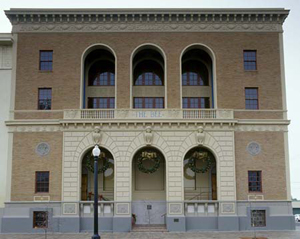
The first National Arts Index released Wednesday by the group Americans for the Arts shows the country’s artists and arts businesses fell into their biggest slump in more than a decade in 2008. It looks at 76 indicators, including music royalties, Broadway ticket sales, museum visits, philanthropy and the number of college art majors.
The index registered an overall 4.2 percent decline for the arts sector from 2007 to 2008, though researchers say the problems began brewing much earlier.
“The issues that arts organizations are facing right now aren’t simply a function of the economic downturn,” said Robert Lynch, president of the group. “You can really see the arts have been losing market share in areas of private philanthropy fairly steadily for a decade now.”
Other arts groups have failed to prepare for the lean times or adapt to changing audiences, he said. The index comprises four years of research and will be updated each year in October to assist arts managers with their planning.
The study is based on government and private sector data covering finances, employment numbers, educational statistics and consumer spending.
Among the key findings:
- The number of nonprofit arts groups grew from 73,000 to 104,000 since 1998. Still, one out of three failed to break even on their budgets, even in the best economic years.
- The arts follow the country’s business cycle and depend on billions of dollars in consumer spending. Researchers predict the arts “may not ‘hit bottom’ until 2011” when a rebound will begin.
- Public participation in the arts is increasing on the Internet, at ethnically and culturally specific organizations and at home as people create their own art. Attendance at mainstream arts organizations is in a steady decline.
- Arts and cultural groups are losing market share of philanthropy to other charitable causes, including international, environmental and disaster relief.
- Demand for arts education is up as more college-bound high school seniors are completing four years of arts and music, and the number of college art degrees conferred annually has grown by 45,000 over the past decade.
The lobbying group, which presses for more government funding for the arts each year, had predicted last year that the nation’s current economic slump could put as many as 10,000 arts organizations out of business. Some have closed their doors, but the numbers haven’t been so severe.
“That is because nonprofit arts organizations in particular are not bottom-line-driven but mission-driven and will do what it takes to survive,” Lynch said.
___
On the Net:
Americans for the Arts: http://www.americansforthearts.org/
Copyright 2010 Associated Press. This material may not be published, broadcast, rewritten or redistributed.
AP-CS-01-20-10 0823EST

